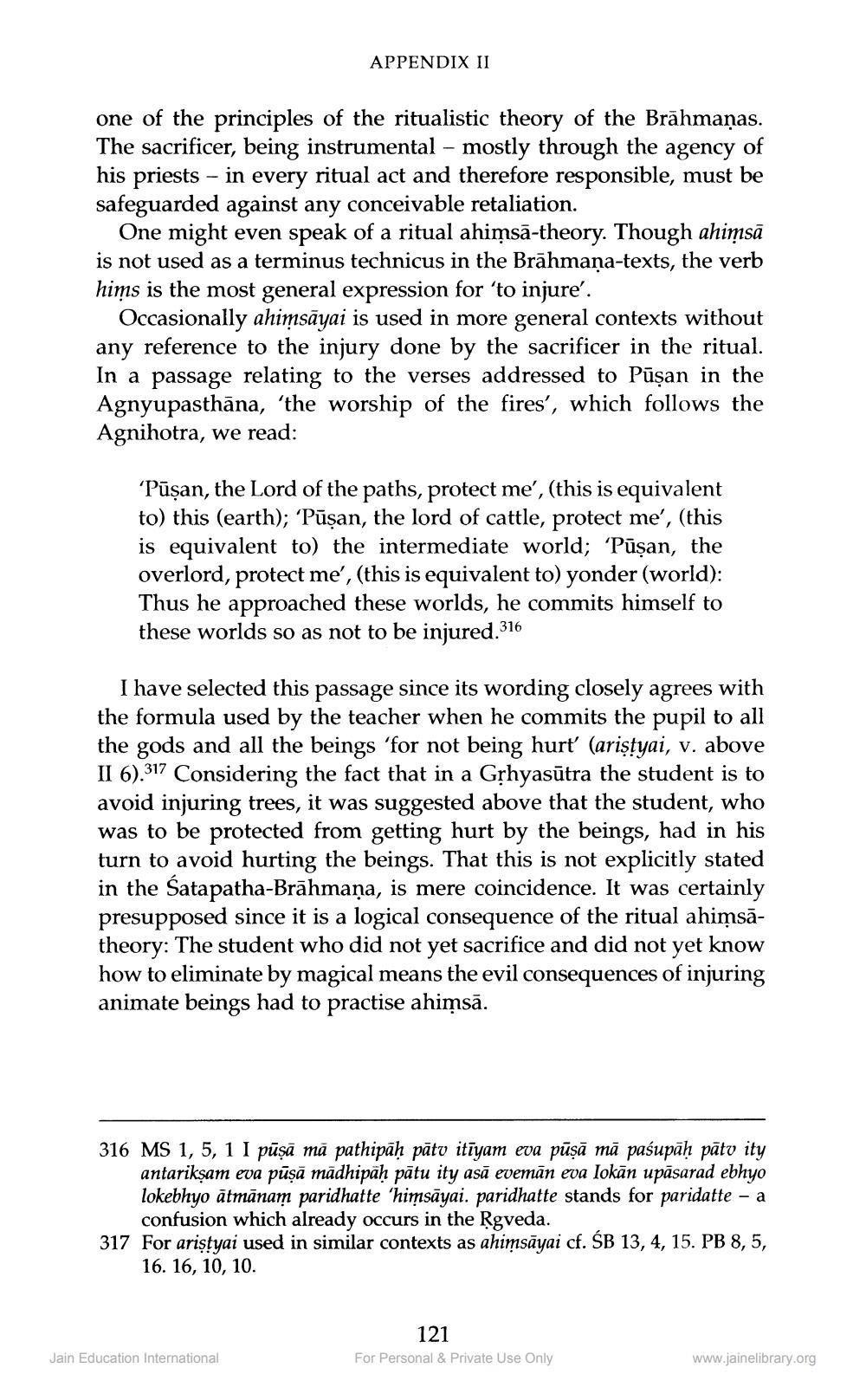________________
APPENDIX II
one of the principles of the ritualistic theory of the Brāhmaṇas. The sacrificer, being instrumental - mostly through the agency of his priests - in every ritual act and therefore responsible, must be safeguarded against any conceivable retaliation.
One might even speak of a ritual ahimsā-theory. Though ahiņsā is not used as a terminus technicus in the Brāhmaṇa-texts, the verb hims is the most general expression for 'to injure'.
Occasionally ahimsāyai is used in more general contexts without any reference to the injury done by the sacrificer in the ritual. In a passage relating to the verses addressed to Pūşan in the Agnyupasthāna, 'the worship of the fires', which follows the Agnihotra, we read:
“Pūşan, the Lord of the paths, protect me', (this is equivalent to) this (earth); “Pūşan, the lord of cattle, protect me', (this is equivalent to) the intermediate world; Pūşan, the overlord, protect me', (this is equivalent to) yonder (world): Thus he approached these worlds, he commits himself to these worlds so as not to be injured.316
I have selected this passage since its wording closely agrees with the formula used by the teacher when he commits the pupil to all the gods and all the beings 'for not being hurť (aristyai, v. above II 6).317 Considering the fact that in a Gșhyasūtra the student is to avoid injuring trees, it was suggested above that the student, who was to be protected from getting hurt by the beings, had in his turn to avoid hurting the beings. That this is not explicitly stated in the Satapatha-Brāhmaṇa, is mere coincidence. It was certainly presupposed since it is a logical consequence of the ritual ahimsātheory: The student who did not yet sacrifice and did not yet know how to eliminate by magical means the evil consequences of injuring animate beings had to practise ahimsā.
316 MS 1, 5, 1 I pūṣā mā pathipāḥ pātv itīyam eva pūşā mā paśupāḥ pātv ity
antarikşam eva pūķā mādhipah pātu ity asā eveman eva lokān upăsarad ebhyo lokebhyo ātmānam paridhatte 'himsāyai. paridhatte stands for paridatte - a
confusion which already occurs in the Rgveda. 317 For aristyai used in similar contexts as ahimsāyai cf. ŚB 13, 4, 15. PB 8,5,
16. 16, 10, 10.
121 For Personal & Private Use Only
Jain Education International
www.jainelibrary.org




